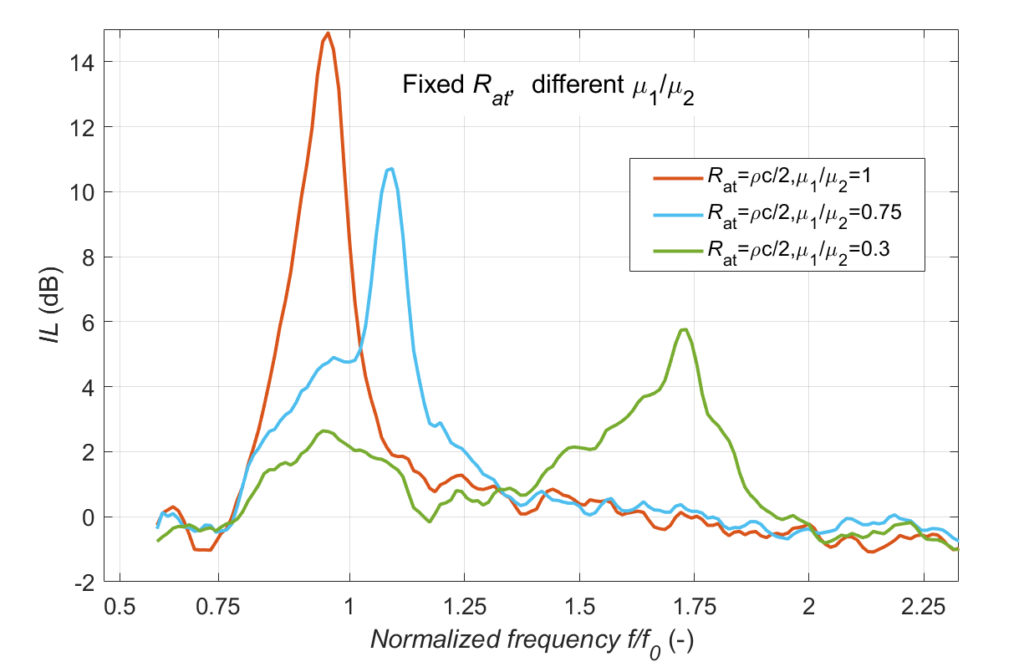Objectives
To the preceding section: Challenges
The H2020-SALUTE project builds upon the results of the FP7-ENOVAL project by designing, optimizing and assessing an active acoustic liner prototype.
A first prototype developed in the frame of the FP7-ENOVAL project consisted of a 2D arrangement of 3×10 small electroacoustic transducers used as active membrane sound absorbers, following the Electroacoustic Absorber concept , described in the Technologies page.
Active Acoustic Liner Prototype
The prototype developed in the frame of the ENOVAL project consisted of a 2D surface with a regular lattice of 3×10 small (5 cm diameter) electrodynamic loudspeakers (sub-contracted to CTTM, Le Mans, France), each comprising 1/8 inch electret microphones on the 4 corners of the square unit-cell, and an individual electronic control, developed by FEMTO-ST.
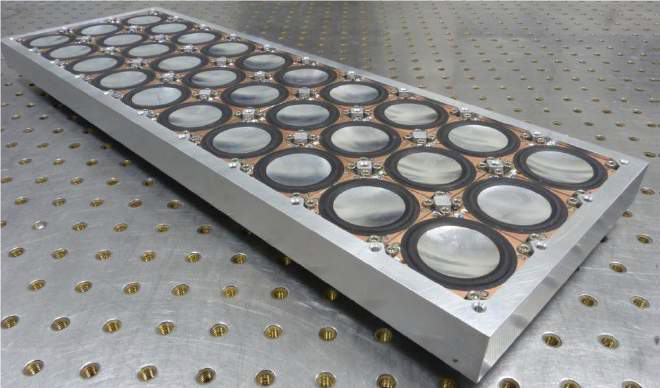
ENOVAL prototype of active acoustic liner (© CTTM) 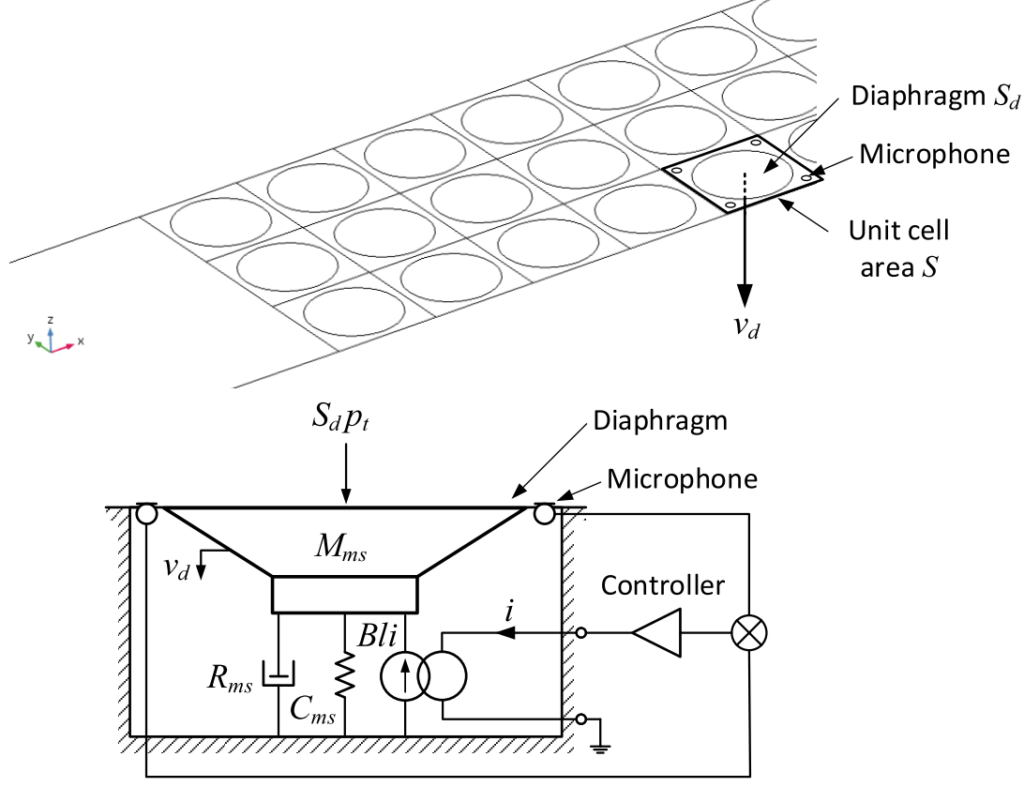
Sketch of the active acoustic liner concept
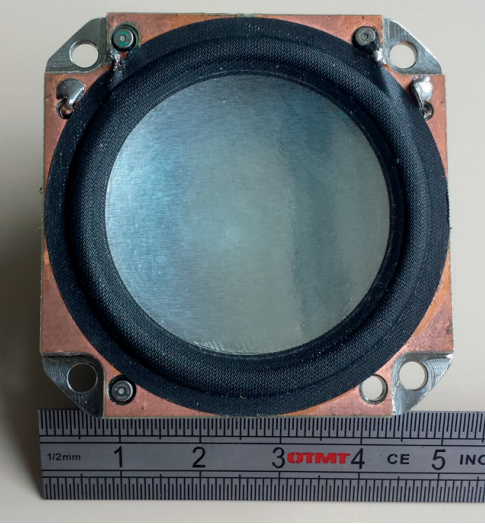
Picture of a unit-cell (©CTTM) 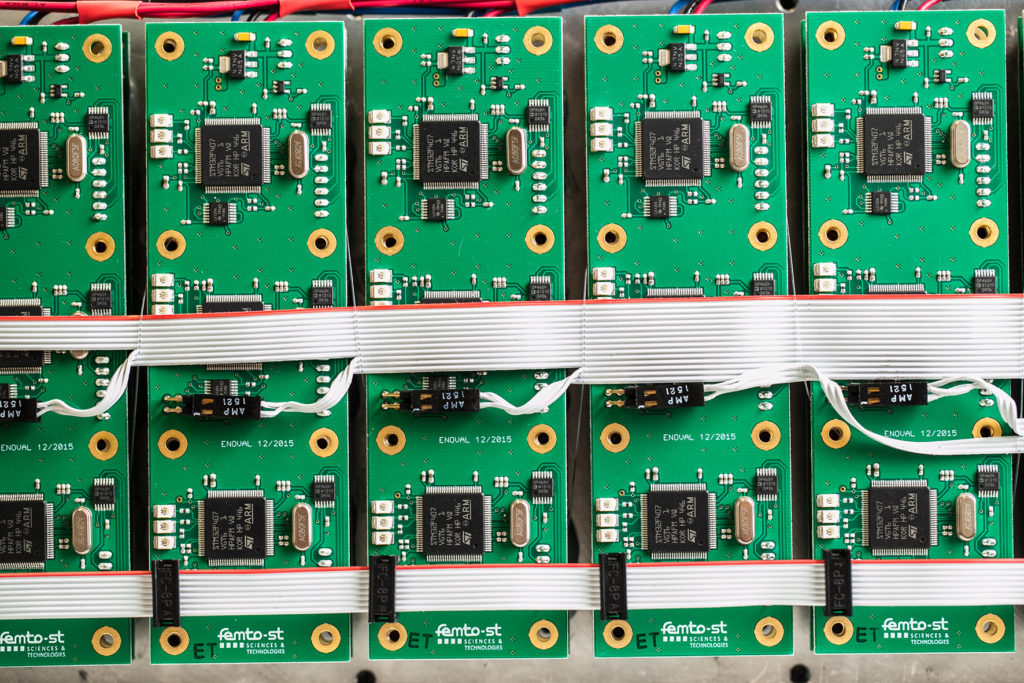
individual electronic control card (©FEMTO-ST) 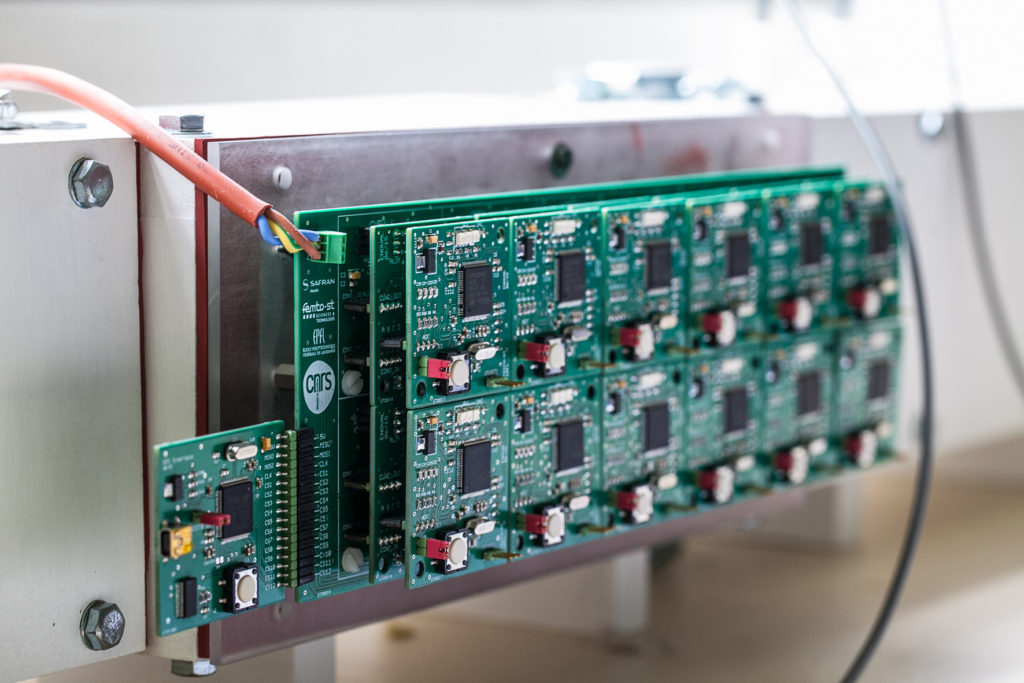
Whole electronic card (©FEMTO-ST)
Experimental validation
The developed prototype has then been constructed and validated in the wind-tunnel test facility at the Royal Netherlands Aerospace Center (NLR). The assessment consisted in measuring the Insertion Loss performance in dB, ie. the difference of sound intensity level downstream the test section between the situation without (hard boundary condition), and then with the active acoustic liner.


Some experimental results are shown below, in terms of Insertion Loss (IL), representing the noise attenuation performance of the absorber prototype in the wind-tunnel test facility. It shows the IL measured with the active acoustic liner set to different control case: on the left, the resonance frequency of each electroacoustic absorber is kept unchanged and the target acoustic resistance (at resonance) takes different values (for further explanations on the parameters of control, see the Technologies page).
These experimental measurements show the efficiency of the proposed technology to achieve adaptive engine noise attenuation, with insertion loss up to 15 dB, spanning a frequency range of 2 octaves around the natural resonance frequency of the (passive) loudspeakers. In this project, the tested control strategy consisted in synthesizing variable narrow-band SDOF resonators (ie. IL curves are tight around the frequency of maximal efficiency). Alternative control strategies might allow further improving the performance, as foreseen in the SALUTE project.
These results have been published in .
Issues encountered in the ENOVAL project
The following issues have been encountered with the ENOVAL prototype:
- Loudspeakers vibration modes likely to affect the sound absorption performance;
- Microphones installed on the prototype for the control were limited to noise levels lower than 120 dB, which was insufficient to increase the Mach number conditions;
- Control performance limited due to instability issues with the hard-walls facing the active liner. This issue has been mitigated by adding passive material.
SALUTE: a follow-up of ENOVAL
The objectives of the H2020-SALUTE project is to further improve the Technology-Readiness Level (TRL) of the proposed active acoustic liner concept:
- Upgrade the electroacoustic components (louspeakers, microphones, electronic hardware) wrt environmental specifications (weight, dimensions, operating temperature, etc.)
- Improve the performances in the presence of flow (M>0.15)
- Improve the performance towards low-frequencies
- Adapt the concept to limited available treatment area, both in the intake and the by-pass duct part of the engine
References
To the next section: Methodology


